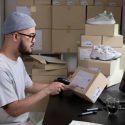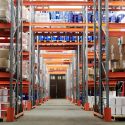As e-commerce continues to expand and evolve, Amazon FBA (Fulfillment by Amazon) remains one of the most powerful platforms for entrepreneurs and businesses to reach global consumers. With over 2 million active sellers worldwide and an increasingly competitive landscape, identifying profitable niches and emerging product trends is essential for success in 2025.
Table of Contents
But what exactly will sell in the coming year? What trends should sellers follow, and what consumer behaviors are shaping the next wave of high-performing products?
In this article, we’ll take a close look at the key Amazon FBA trends for 2025, focusing on what types of products are likely to be most profitable, and why. Whether you’re a seasoned seller or considering your first private label launch, this deep dive is designed to offer valuable insight—without the sales pitch.
Why Trends Matter in Amazon FBA
Before we dive into specific product categories, let’s establish why trends matter at all. In a marketplace as saturated as Amazon, success depends not just on having a good product, but on having the right product at the right time.
The best-performing sellers often:
-
Identify emerging needs before they hit the mainstream.
-
Leverage niche markets that are underserved.
-
Stay responsive to seasonal, social, and economic shifts.
-
Use trends to improve inventory forecasting and reduce waste.
So, instead of chasing saturated categories or copying bestsellers, savvy sellers look for upcoming trends that are data-informed, sustainable, and aligned with consumer values.
1. Eco-Friendly and Sustainable Products
The push toward sustainability is no longer a fringe movement—it’s mainstream. Consumers are increasingly conscious of eco-friendly packaging, sustainable materials, and ethical sourcing. In 2025, we can expect this trend to deepen.
Profitable Sub-Niches:
-
Compostable household items (trash bags, sponges, kitchen wrap).
-
Reusable alternatives (beeswax wraps, metal straws, silicone storage bags).
-
Biodegradable pet products (waste bags, grooming tools).
-
Low-waste personal care (solid shampoos, bamboo toothbrushes).
Sustainability doesn’t mean low-profit. In fact, eco-conscious buyers often pay a premium for products that align with their values. Just make sure your branding and certifications are authentic—greenwashing is increasingly frowned upon.
2. Health Optimization & Biohacking Tools
The wellness industry continues to expand beyond traditional health products. In 2025, we’re seeing a shift toward personal health optimization and the growing influence of biohacking—a self-improvement trend focused on nutrition, recovery, and mental performance.
Profitable Sub-Niches:
-
Cold therapy products (ice baths, cryotherapy wraps).
-
Red light therapy devices (for skin, recovery, and energy).
-
Blue light blocking gear (glasses, screen protectors).
-
Sleep-enhancing tools (weighted eye masks, sound machines, wearable trackers).
These products often have high margins and appeal to a dedicated customer base looking for innovation and results. They also invite opportunities for education-based marketing through content or influencer partnerships (though we won’t go into that here).
3. Home Fitness & Wellness
Home workout equipment boomed during the pandemic—and while gyms are open again, the convenience and privacy of home fitness have secured it as a permanent category. But in 2025, it’s evolving.
Profitable Sub-Niches:
-
Smart fitness gear (connected resistance bands, app-integrated yoga mats).
-
Compact and travel-friendly equipment (foldable benches, portable weights).
-
Mobility and recovery tools (foam rollers, massage guns, balance boards).
What sets this apart from the 2020 boom is a focus on space efficiency, recovery, and personalization. People don’t just want to sweat—they want to feel better holistically, and they want tools that fit their busy lives.
4. Niche Hobbies and DIY Craft Kits
One overlooked trend on Amazon is the rise of micro-communities and hobby niches. As more people prioritize offline time and creative outlets, products that support hobbies, crafting, and learning continue to thrive.
Profitable Sub-Niches:
-
DIY candle and soap-making kits.
-
Wood carving or pyrography sets.
-
Pottery kits with air-dry clay.
-
Paint-by-number kits for adults.
-
Niche journaling or calligraphy sets.
These products are great for Amazon FBA because they’re lightweight, giftable, and cater to a passionate, recurring audience. Kits that include everything in one box do especially well.
5. Pet Products That Solve Real Problems
Pet spending remains recession-resistant. But in 2025, pet owners want more than toys—they want solutions, especially for behavior, health, and travel.
Profitable Sub-Niches:
-
Portable dog water bottles or feeders.
-
Anxiety relief beds or vests.
-
Paw cleaners or grooming gloves.
-
Odor-neutralizing products with natural ingredients.
-
Pet tech (GPS trackers, smart feeders).
The success of pet products lies in addressing emotional pain points (like mess, stress, or safety) and improving daily convenience. Bonus: many pet owners are loyal repeat customers.
6. Minimalist Home Organization Tools
As people increasingly embrace minimalism and intentional living, there's a surge in demand for products that support decluttering, storage, and aesthetic home organization.
Profitable Sub-Niches:
-
Stackable food storage containers.
-
Drawer organizers for makeup, tools, or office supplies.
-
Cord management and charging docks.
-
Under-bed and closet storage kits.
Think function meets aesthetics. Products that blend utility with clean design—especially in neutral colors—tend to win in this space.
7. Digital Nomad and Remote Work Gear
Remote work is not a temporary trend—it’s now baked into global work culture. Digital nomads, freelancers, and hybrid workers are investing in tools that support mobility, focus, and comfort.
Profitable Sub-Niches:
-
Ergonomic laptop stands and compact standing desks.
-
Noise-canceling desk dividers or portable whiteboards.
-
Backpacks designed for tech gear.
-
Cable organizers and gadget pouches.
These are ideal for FBA: tech-adjacent, lightweight, and highly searchable. Just be careful with electronics themselves, which can lead to higher return rates unless quality is very high.
8. Children’s Educational Products (Non-Digital)
Parents are increasingly concerned about screen time, which has led to a demand for offline, educational, and sensory-stimulating products.
Profitable Sub-Niches:
-
STEM kits and building sets.
-
Montessori-inspired toys.
-
Bilingual flashcards and storybooks.
-
Crafts that promote fine motor skills.
These products appeal to parents and educators alike. In 2025, we’re seeing growth in toys that are simple, tactile, and skill-oriented, rather than flashy or app-connected.
What Makes a Product Profitable on Amazon FBA?
Beyond the trends themselves, profitability depends on several key factors:
-
Low competition with strong demand (use tools like Helium 10, Jungle Scout, or Google Trends).
-
Reasonable size and weight (to avoid high FBA fees).
-
Room for differentiation (branding, bundling, features).
-
Healthy margins (at least 30% after all costs).
-
Good supplier reliability (especially if manufacturing overseas).
Even a trendy product can flop if it’s hard to ship, easy to copy, or overpriced. On the other hand, a well-executed product in a rising niche can generate long-term passive income and brand loyalty.
A Word of Caution: Don’t Just Follow the Crowd
Just because something is trending doesn't mean it's right for you. Thousands of sellers jump on trends, and many end up with overstocked inventory and razor-thin margins.
Instead of chasing what everyone else is doing, consider this:
-
Do you understand the niche and the audience?
-
Can you offer a genuinely better version of what’s out there?
-
Can you build around it—not just one product, but a line or brand?
-
Are you solving a specific problem or creating a joyful experience?
These questions matter more than the trend itself. The most profitable FBA businesses in 2025 won’t be those who guess the trend—they’ll be the ones who execute it intelligently and authentically.
Final Thoughts
Amazon FBA in 2025 is still full of potential—but that potential belongs to those who are informed, creative, and adaptable. The landscape favors problem-solvers, not just product pushers.
Whether you’re looking at sustainability, wellness, pet care, or home improvement, the key to profitability lies in understanding your audience, offering real value, and staying ahead of the curve without getting lost in the noise.
So before your next product launch, take a step back. Listen to the market. Listen to your customers. And build something that lasts longer than just a trend.
Our score
- Number of features
- Pricing
- Learning curve
- User friendly
Alternatives to Trends in Amazon FBA for 2025: Which Products Will Be Most Profitable?
Here you can find the top Trends in Amazon FBA for 2025: Which Products Will Be Most Profitable?s alternatives
About the author
Jordi Ordonez
I’m an independent eCommerce and Amazon consultant.
Clients
I've worked with brands like Estrella Damm, Intersport, Bella Aurora, Lladró, Textura Interiors, Nice Things Palomas, Castañer, Due-Home, and many others.
Lecturer & Teacher
I’ve spoken and taught at events such as Meet Magento, PrestaShop Day, SEMrush, Cambra de Comerç Barcelona, ClinicSEO, EcommBeers, EcommBrunch, Ecommercetour.com, EcommFest, EOI, ESIC-ICEMD, Foxize, Generalitat de Catalunya, Inesdi, Quondos, and The Valley. I’ve also delivered in-company training sessions for major brands like Orange and Adidas.
Writer
I regularly contribute articles to the Helium 10 blog, Shopify, SEMrush, La Vanguardia, eCommerce News, Marketing4ecommerce, and others.
Partner
Helium 10, Jungle Scout, Avask, Helium 10 Seller Solutions Hub Partner, SaaS4Marketing, H10-wp.com, FBASuite.com, and a Trusted Partner of Tracefuse.
Social
LinkedIn, Twitter, Wikipedia, YouTube, Quora, ISNI 0000000513224289, About Jordi Ordonez











